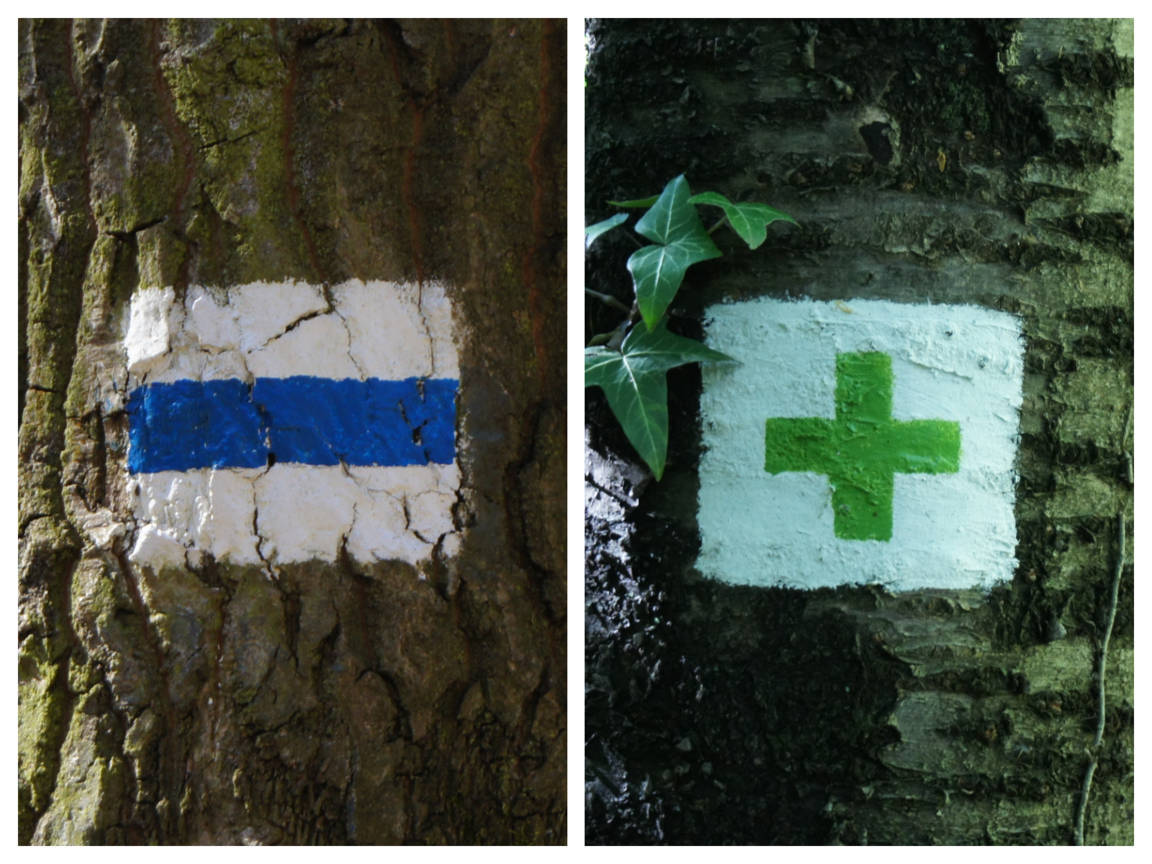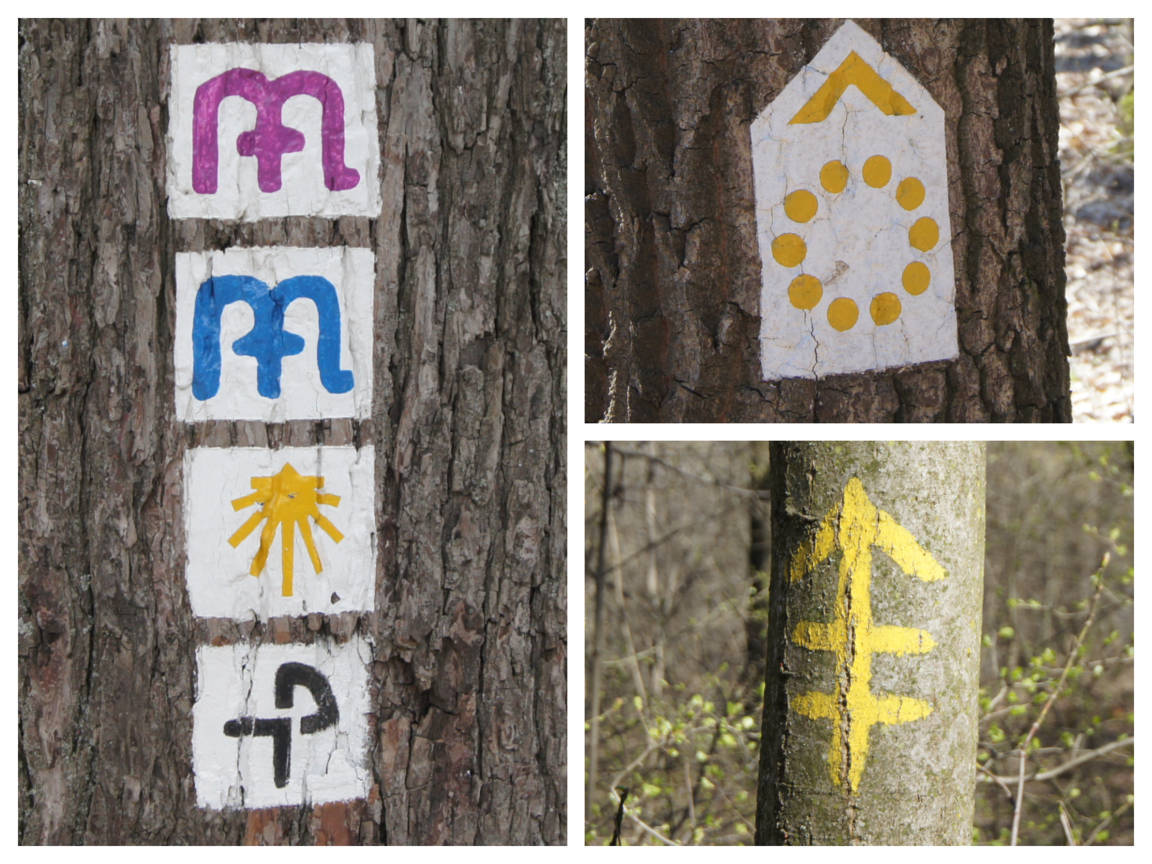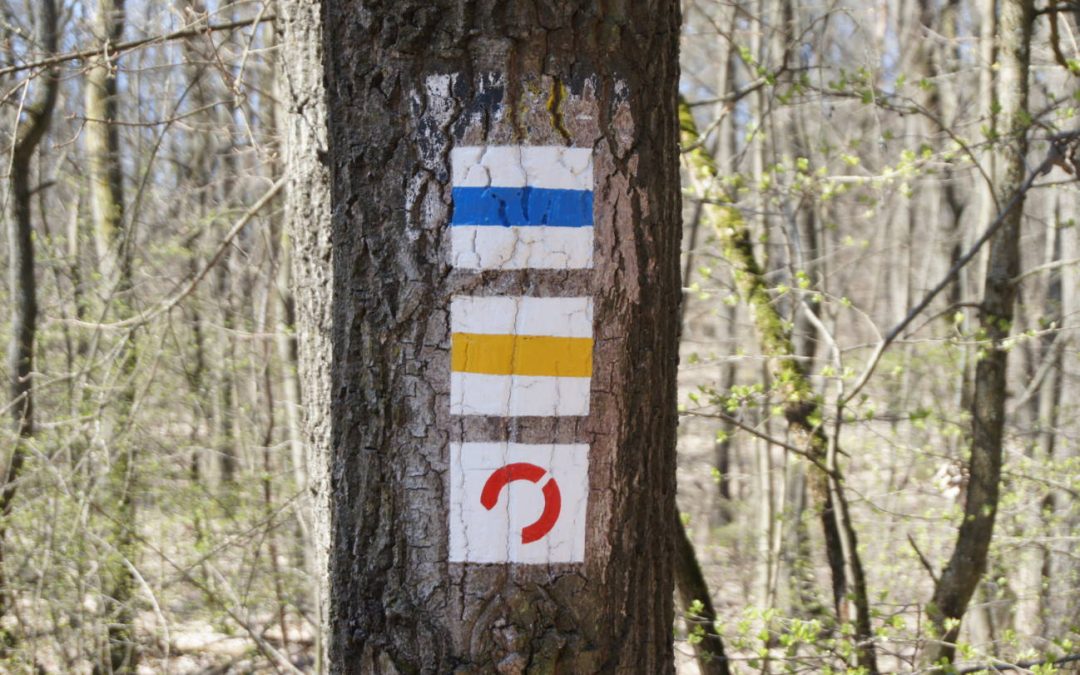When I go hiking in other countries, I see a lot of different solutions for trail blazing. Sometimes there is just one colour and one type of marker for all trails (with texts under them), or sometimes they have more types and colours, but there seems to be no logic in their use, they can be rather confusing. That is why I am so proud, when it comes to the trail markings we use in Hungary, I think we have one of the best (if not the best) systems in the world.
The first trail markers of Hungary were made in 1888 in the Mátra mountains. They were created by the local hiker associations and were quite chaotic, as they didn’t use the colours and shapes logically. The uniformized system we know today was made in 1930 by the Hungarian Hiker Alliance and it was further improved many times. The latest standards were released by the alliance in 2021 and they contain all the important details of the trail markings.
Let’s see now how the trail markers work in Hungary!
Colour
The colour defines the importance of the trail.

The blue trails are the most important trails of the country, they usually cross more regions, like the National Blue Trail, but there are other blue trails in the country, not just this famous one.
The red trails are also very important; they could be of regional significance, sometimes leading through more counties.
The yellow trails mark the other important connecting trails of the network.
The green trails have a local role, they usually don’t expand outside a region or county.
Shape
The shape defines the role of the trail. There are basic and special markings.
The line is the basic trail marker, usually it gives the backbone of the system.The cross is also a basic trail sign, these trails connect other trails.

The triangle is a special marker, it means this trail leads to a peak or lookout point. The semi-circle trail is a loop, it will get you back to the starting point. Following the big dot you can find fresh water, usually these trails lead to springs or wells. The omega sign leads you to a cave.
The L shaped marker symbolizes a ruin. The stamp marking – surprisingly – leads to a stamp, which is either a stamp of the National Blue Trail or another hiker movement. The T sign shows a learning trail, which usually has info boards along the way. The heart sign is a relatively new type, it is basically a cardio trail, not too difficult, not too easy, perfectly balanced to keep you fit by a healthy walk. 
The square trails lead to a settlement, accomodation, or transportation. There are also markers for religious places and monuments.
The special trail signs take up the colour of the basic (line or cross) trail they are attached to. You can find the marker where the trail starts (or ends) by noticing a smaller dot in the corner of the sign. If there is an angle bracket on either side of the sign or the line forms an arrow, the trail is taking a turn in that direction.

Sometimes trails can cross borders. A good example is the Alpannonia trail coming from Austria, which has its own markings too.
Some trails are for certain sports like running or cycling.
Pilgrim trails of Hungary
There are many pilgrim trails in Hungary as well. 
The most famous religious trails in Hungary are probably the Mary-trails, symbolized by an M shaped sign (purple or blue). These trails connect all the places of worship dedicated to Virgin Mary, and they extend across the borders of the country.
The ‘Hungarian El-Camino’ aka. the Way of Saint James is basically the Hungarian section of the famous pilgrim route, which starts in Lébény and ends in Spain. It is marked by the classic yellow shell sign.
The pilgrim trails of the pauline fathers are marked with a black P letter and are really new, they were inaugurated in 2022. They are thematically connected to the only monk order, which was founded by Hungarians: the order of Saint Paul, the hermit.
The Via Margaritarum, aka. the Way of Pearls leads from the national place of worship (Mátraverebély-Szentkút) to Mariazell (Austria). Its sign are yellow pearls in a circle.
The Hungarian Pilgrim Trail is marked by a yellow double cross-arrow combination and touches several important religious sites in the country.

